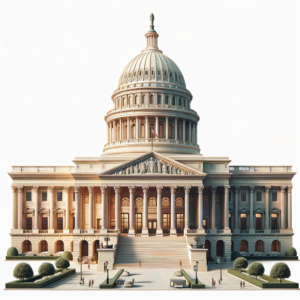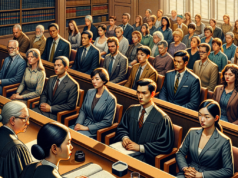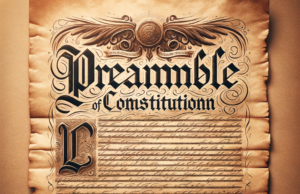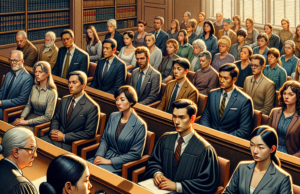Contents
- 1 Understanding the Current Landscape of Mass Shootings: A Statistical Overview
- 2 Analyzing the Factors Contributing to the Rise in Mass Shooting Incidents
- 3 The Impact of Mass Shootings on Communities: A Societal Perspective
- 4 Legislative Responses: Evaluating Gun Control Measures and Their Effectiveness
- 5 Psychological Insights: The Mindset of Perpetrators and Prevention Strategies
- 6 Moving Forward: Strategies for Reducing Mass Shootings and Enhancing Public Safety
In recent years, the United States has witnessed an alarming surge in mass shooting incidents, prompting urgent discussions about the underlying causes, societal impacts, and potential solutions. This article delves into the current landscape of mass shootings, examines contributing factors, assesses the effects on communities, evaluates legislative responses, explores psychological insights, and proposes strategies for enhancing public safety.
Understanding the Current Landscape of Mass Shootings: A Statistical Overview
The frequency of mass shootings in the United States has escalated dramatically, with data from the Gun Violence Archive indicating that there were over 600 mass shooting incidents in 2022 alone, a stark increase from previous years. These incidents, defined as events in which four or more individuals are shot, have become a tragic hallmark of American life. The FBI reports that mass shootings account for a small percentage of overall gun violence; however, their impact is profound, often resulting in significant loss of life and widespread trauma. The geographic distribution of these events reveals that they are not confined to urban areas but occur in suburban and rural settings as well, underscoring the pervasive nature of gun violence across the nation.
Analyzing the Factors Contributing to the Rise in Mass Shooting Incidents
Several interrelated factors contribute to the rise in mass shooting incidents, including societal, cultural, and economic influences. The normalization of violence in media, the proliferation of firearms, and the increasing accessibility of high-capacity magazines are significant contributors. Additionally, mental health issues, often exacerbated by social isolation and economic stressors, play a critical role in the motivations behind these acts. The intersectionality of these factors creates a complex landscape where individuals may feel compelled to resort to violence, leading to tragic outcomes. Furthermore, the rise of extremist ideologies and hate groups has also been linked to an increase in targeted mass shootings, further complicating the issue.
The Impact of Mass Shootings on Communities: A Societal Perspective
The repercussions of mass shootings extend far beyond the immediate victims and their families; they reverberate throughout entire communities. Survivors often grapple with long-term psychological effects, including post-traumatic stress disorder (PTSD), anxiety, and depression. Communities affected by mass shootings frequently experience a breakdown in social cohesion, as fear and mistrust permeate public spaces. The economic impact is also significant, as businesses may suffer from decreased patronage in the aftermath of such events. Moreover, the emotional toll on first responders and healthcare professionals cannot be overlooked, as they are often left to manage the aftermath of these tragedies, leading to burnout and mental health challenges within these critical professions.
Legislative Responses: Evaluating Gun Control Measures and Their Effectiveness
In response to the rising tide of mass shootings, various legislative measures have been proposed and enacted at both state and federal levels. Gun control advocates argue for stricter background checks, bans on assault weapons, and limitations on magazine capacities as essential steps toward reducing gun violence. However, the effectiveness of these measures remains a contentious topic. While some studies suggest that states with stricter gun laws experience lower rates of gun violence, opponents argue that such regulations infringe upon Second Amendment rights and may not effectively deter determined perpetrators. The debate continues to evolve, with policymakers grappling with the balance between public safety and individual freedoms, making it a complex and polarizing issue.
Psychological Insights: The Mindset of Perpetrators and Prevention Strategies
Understanding the psychological profile of mass shooting perpetrators is crucial for developing effective prevention strategies. Research indicates that many individuals who commit mass shootings exhibit signs of social alienation, mental health issues, and a desire for notoriety. Early intervention programs that focus on mental health support, community engagement, and conflict resolution may help identify at-risk individuals before they resort to violence. Additionally, fostering open dialogues about mental health and reducing stigma can encourage individuals to seek help. Law enforcement agencies are increasingly adopting threat assessment models to identify potential threats, allowing for proactive measures to prevent future incidents.
Moving Forward: Strategies for Reducing Mass Shootings and Enhancing Public Safety
Addressing the epidemic of mass shootings requires a multifaceted approach that encompasses legislative action, community engagement, and mental health support. Comprehensive gun reform, including universal background checks and red flag laws, can help prevent firearms from falling into the wrong hands. Community-based initiatives that promote social cohesion and provide resources for mental health support are essential in addressing the root causes of violence. Furthermore, educational programs that teach conflict resolution and empathy can foster a culture of understanding and reduce the likelihood of violent outcomes. Collaboration among lawmakers, mental health professionals, educators, and community leaders is vital to creating a safer environment for all citizens.
The surge in mass shootings is a complex issue that demands urgent attention and action from all sectors of society. By understanding the statistical landscape, analyzing contributing factors, and implementing effective prevention strategies, we can work towards reducing the frequency of these tragic events. A collective commitment to enhancing public safety, promoting mental health awareness, and fostering community resilience is essential in the fight against gun violence. Only through comprehensive and collaborative efforts can we hope to create a safer future for all.
























